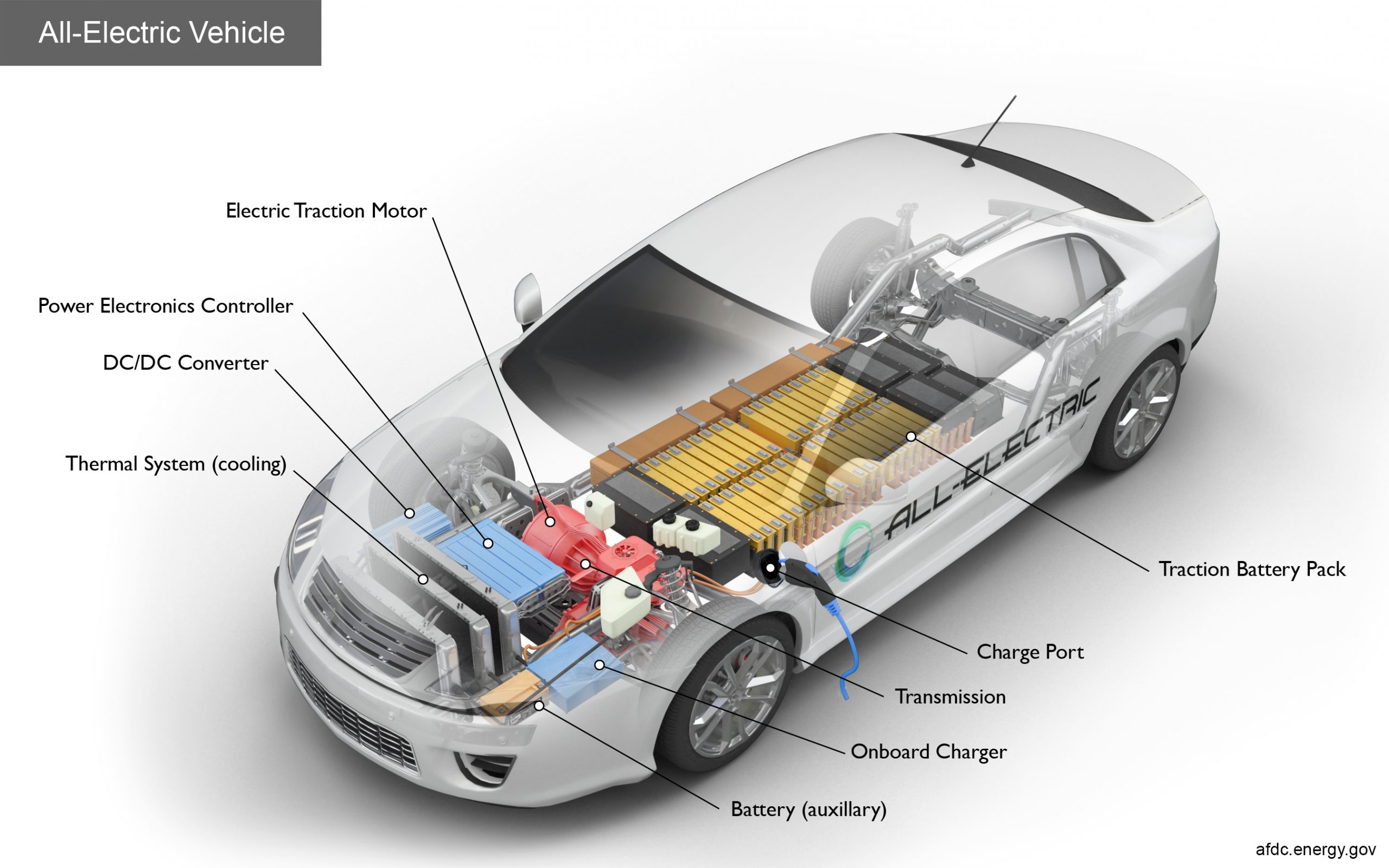How does an Electric Car Engine Work?
Electric Motor
The heart of an electric car is its electric motor. Unlike internal combustion engines found in gasoline-powered vehicles, electric motors convert electrical energy into mechanical energy. This mechanical energy is then used to power the wheels of the car.
Electric motors are more efficient than internal combustion engines, as they can convert over 90% of electrical energy into mechanical energy. In contrast, internal combustion engines typically convert only about 30% of the chemical energy stored in gasoline into mechanical energy.
There are two main types of electric motors used in electric cars: AC (alternating current) motors and DC (direct current) motors. AC motors are more common, as they are more efficient and powerful than DC motors.
Battery
The battery is the energy source for an electric car. It stores electrical energy in chemical form, and this energy is released when the battery is connected to an electrical load, such as an electric motor.
Batteries are made up of multiple cells, each of which consists of two electrodes (a positive electrode and a negative electrode) immersed in an electrolyte solution. When the battery is connected to a load, electrons flow from the negative electrode to the positive electrode, creating an electrical current.
The capacity of a battery is measured in kilowatt-hours (kWh), which represents the amount of energy that the battery can store. The higher the capacity of a battery, the longer the car can travel on a single charge.
Power Electronics
Power electronics are the electronic components that control the flow of electricity in an electric car. These components include the inverter, which converts DC power from the battery into AC power for the motor, and the charger, which converts AC power from the grid into DC power for the battery.
Power electronics are essential for the efficient operation of an electric car. They allow the car to control the speed and torque of the motor, as well as to regenerate energy when the car is braking.
Drivetrain
The drivetrain of an electric car is similar to the drivetrain of a gasoline-powered car. It consists of the transmission, differential, and axles. The transmission transfers power from the motor to the wheels, the differential allows the wheels to turn at different speeds, and the axles transmit power from the differential to the wheels.
Electric cars typically use a single-speed transmission, as electric motors can produce high torque at low speeds. This means that electric cars do not need to shift gears, which makes them more efficient and easier to drive than gasoline-powered cars.
Charging
Electric cars can be charged using a variety of charging methods. The most common method is to plug the car into a charging station. Charging stations can be found at public places like shopping malls and parking garages, as well as at private homes and businesses.
Electric cars can also be charged using wireless charging pads. Wireless charging is a convenient way to charge an electric car, as it does not require the driver to plug the car into a charging station. However, wireless charging is not as efficient as plugged-in charging.
Benefits of Electric Cars
Electric cars offer a number of benefits over gasoline-powered cars, including:
* Zero emissions: Electric cars do not produce any tailpipe emissions, which means that they do not contribute to air pollution.
* Lower operating costs: Electricity is typically cheaper than gasoline, so electric cars can be less expensive to operate than gasoline-powered cars.
* Less maintenance: Electric cars have fewer moving parts than gasoline-powered cars, so they require less maintenance.
* Quieter operation: Electric cars are much quieter than gasoline-powered cars, which can make them more pleasant to drive.
Conclusion
Electric cars are a promising alternative to gasoline-powered cars. They offer a number of benefits, including zero emissions, lower operating costs, less maintenance, and quieter operation. As the technology continues to improve, electric cars are likely to become even more popular in the years to come.





